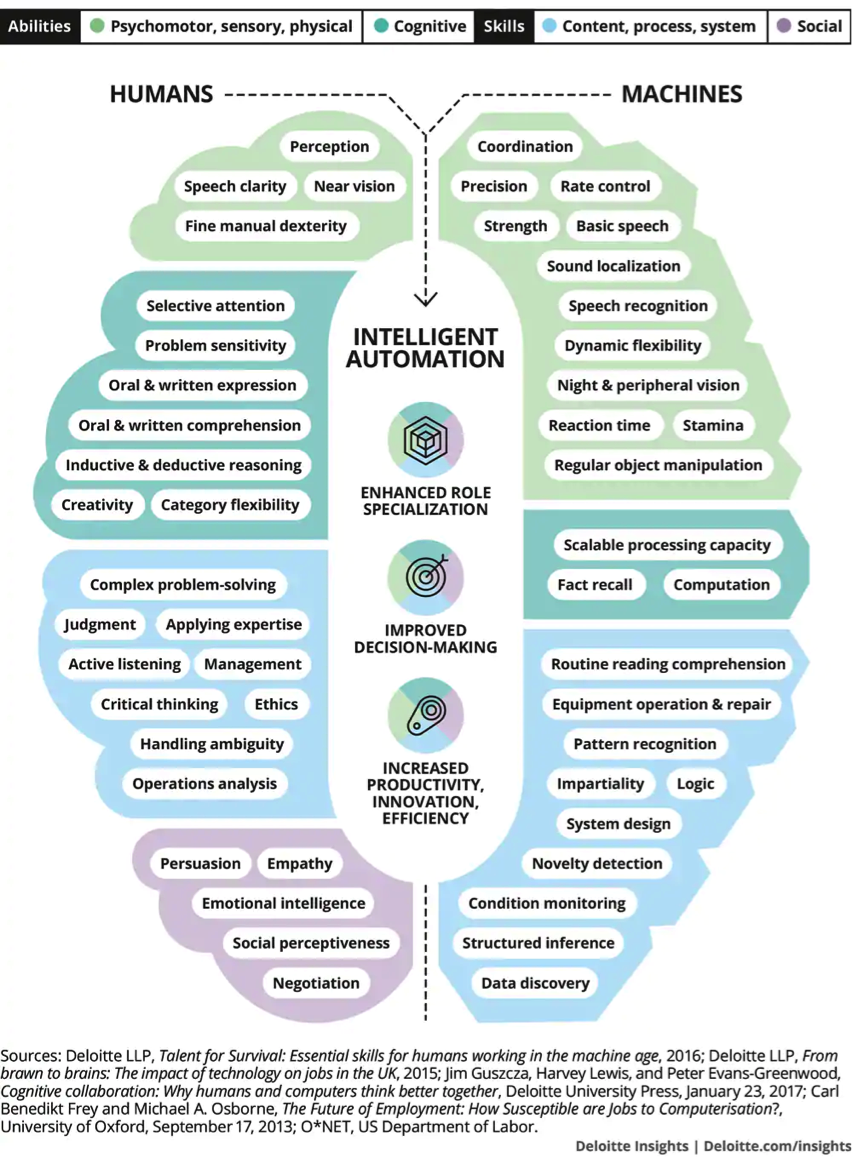Will AI impact workplace learning?
That’s the wrong question. At least, that’s the wrong question to be asking right now. Why? Well, remember when offices had typists? I don’t, but I’ve seen it on TV so it must have been real. Imagine if L&D had asked, “How will the desktop computer help us better train our typists?” That’s where we are right now when it comes to L&D and artificial intelligence (AI), metaphorically speaking.
In real life, thought leadership moves much more quickly than corporate reality. As an industry, we tend to leap to the next BIG THING before we really understand its potential. The clash between the current mindset and future technology is an ongoing challenge. For example, we put classroom sessions on computers when we got access to the internet. We tried to do it again when the smartphone came to popularity. And now people are talking about how digital assistants will help employees access training content more easily. There’s one big thing missing from each of these misguided conversations: context.
How will AI impact the way work gets done in my organization?
That’s the question L&D should be asking right now. After all, the introduction of AI in the workplace is not being led by L&D. Rather, it’s being driven by the operation to achieve broader organizational goals. When you read articles that reference the intent of some corporate management to get by with as little as 1% of the people they employ now, you have to stop and consider the bigger picture. And that picture is likely already being painted within the senior levels of your organization.
Will AI eliminate 99% of the people in your company? Probably not. But just how big will the impact be? No one seems to know just yet, but L&D can’t wait until it happens to start evolving.
The overwhelming fear of job elimination at the hands of AI seems to be giving way to a more informed conversation about how people and machines can best work together and maximize their strengths (Figure 1). However, this may conflict with L&D’s historical focus. Think about it—how much of your time is spent on topics like product knowledge, compliance and process training? If those items quickly fall off the radar and are replaced by more “human skills,” how much will you need to adjust your support strategy?

Figure 1: Human and artificial intelligence strengths and roles at work (From Deloitte’s The no-collar workforce)
Ultimately, L&D must adapt to meet the needs of the evolving workplace. AI is becoming an increasingly big part of that evolution. Yes, our tactics are likely to include AI tools as we shift to focus on the prevailing employee knowledge and skill needs. But our growing use of AI within L&D is not where the conversation should begin.
? Investigate your organization’s AI efforts. Someone in your company is having an AI conversation, if not already implementing technology. Find those players and engage in the strategy conversation to understand the long-term vision.
? Assess early AI impact on employee roles. If AI is already in play, determine how it is impacting the employee experience. Map out how role expectations and support requirements are already starting to change, even if it's only taking place within a specific line of business or with a limited population.
? Start to build your strategy for an AI-enabled workforce. Use your findings to start an L&D strategy conversation within your team and with your stakeholders. Don’t get caught flat-footed. Explore potential future investments and execute small experiments to help you become acclimated to the next phase of technological evolution within your company.
? Determine the role AI will play within L&D. Now you can ask informed, contextualized questions about the role AI will play within workplace learning. How will this technology influence the way you approach strategic factors such as data, administration, and content?
We won’t know the extent to which AI—or any other technology—will ultimately impact the way work gets done within an organization until all of the factors are in play. But plenty of examples are already becoming available. Rather than remain siloed within our own sphere of influence, L&D pros must work to get aligned with the larger strategies taking shape across the organization. We won’t get to make decisions regarding how AI impacts us, but we can do our best to get ahead of the curve and begin shifting our own paradigms to better support what’s coming. And get ready! Unlike some other workplace changes that have taken more than a decade to reach our shores, this one seems to be picking up speed VERY quickly.
While we’re here, could everyone please stop lumping VR, AR, and AI into the same conversation? Sure, they are all “newer” technologies, but they don’t necessarily have much to do with each other when it comes to application. Don't ask if AI will impact workplace learning. Ask how AI will affect workplace performance. This will help clean up the discussion a bit more. Thanks!



